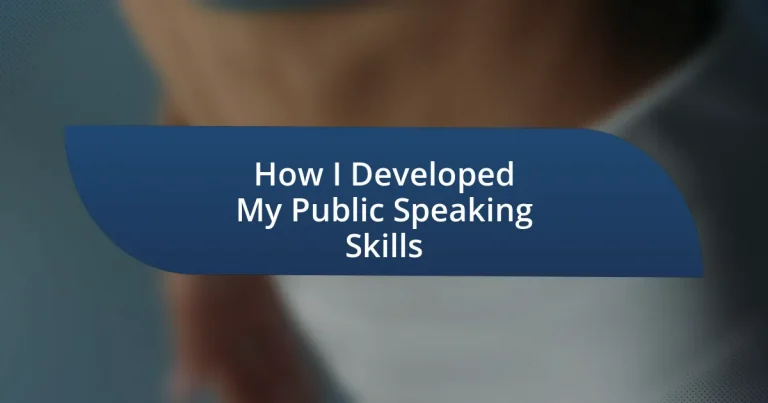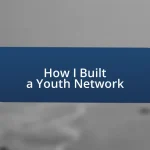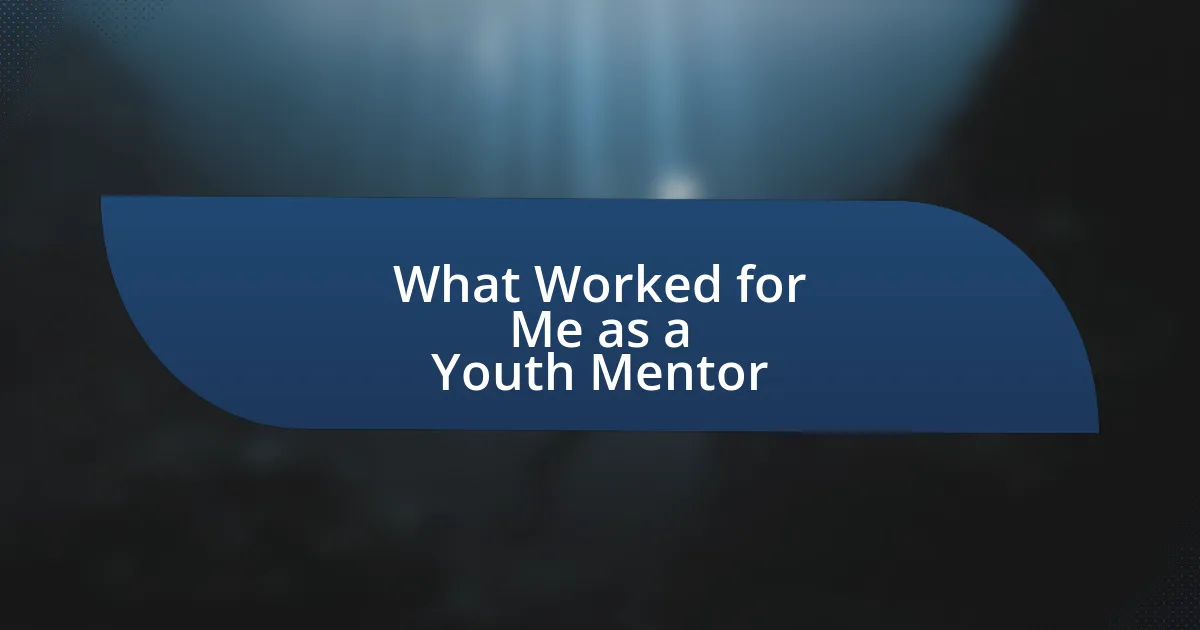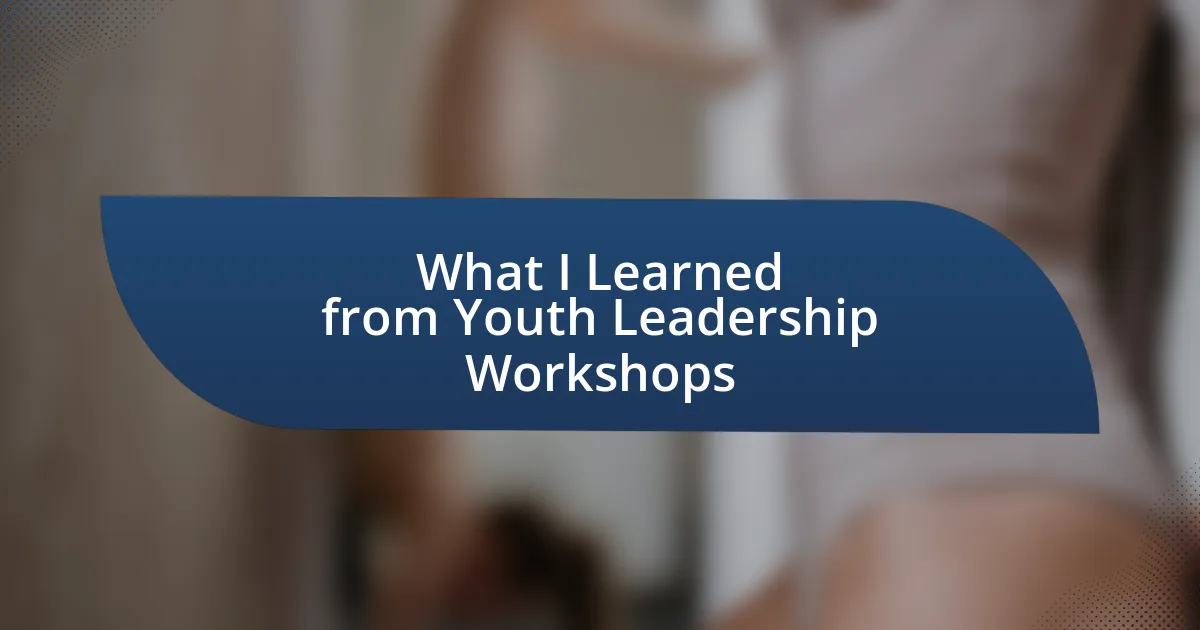Key takeaways:
- Initial fears in public speaking stemmed from fear of judgment and self-doubt, but overcoming these fears began with shifting perspective on self-worth.
- Setting clear, SMART goals helped track progress and maintain motivation in developing public speaking skills.
- Real-world practice opportunities, like community events and local clubs, provided a supportive environment for skill development.
- Seeking constructive feedback from trusted sources was crucial for recognizing areas of improvement and boosting confidence.
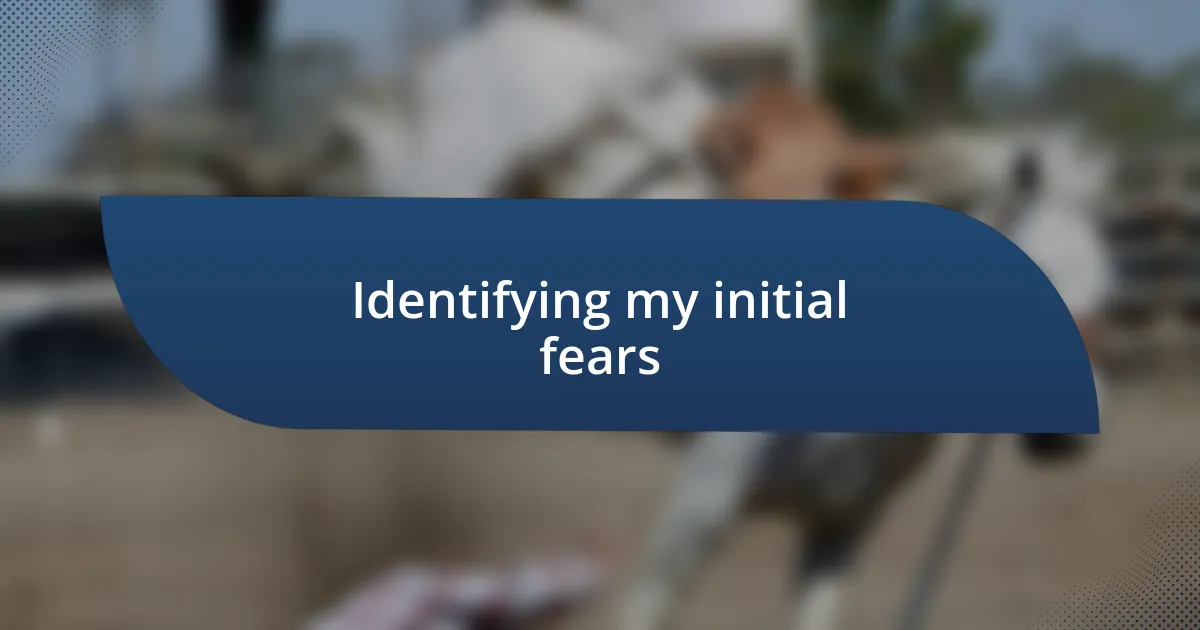
Identifying my initial fears
When I first ventured into public speaking, my mind buzzed with fears that felt almost paralyzing. What if I stumbled over my words or, even worse, completely blanked out? I vividly remember standing in front of a small group for the first time, my heart racing and palms sweating, as self-doubt whispered that I would embarrass myself.
The fear of judgment loomed large in my mind. I often found myself wondering how the audience would perceive me—would they think I was knowledgeable or simply a fraud? I can still recall that sinking feeling when I saw familiar faces in the crowd, instantly amplifying my anxiety. The thought of being critiqued by friends heightened my apprehension, making it harder to focus on my message.
As I reflected on these fears, I realized they stemmed not only from the act of speaking itself but also from my desire for acceptance. I asked myself: Why did I care so much about others’ opinions? Understanding that my worth wasn’t tied to their judgments was revolutionary for me. That shift in perspective became crucial as I started to confront—and eventually overcome—my fears.
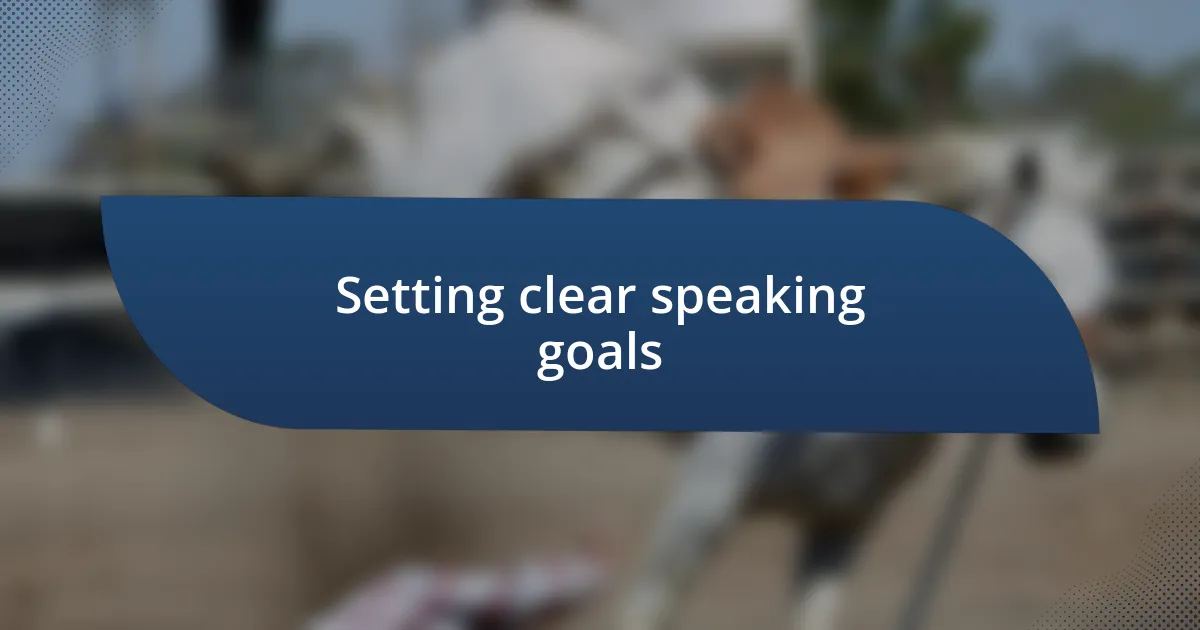
Setting clear speaking goals
Setting clear speaking goals is fundamental when developing your public speaking skills. For me, it began with identifying what I truly wanted to achieve. I remember jotting down specific goals like “improve my confidence” or “engage the audience more effectively.” Each goal was a stepping stone, and having clarity helped me stay focused during my practice sessions.
As I progressed, I learned the value of SMART goals—Specific, Measurable, Achievable, Relevant, and Time-bound. I set a goal to deliver a five-minute talk on a topic I loved within a month. Knowing exactly what I wanted to achieve pushed me to practice consistently and made each session purposeful. The thrill of checking that box was more than just a milestone; it was a genuine acknowledgment of my growth.
Goal-setting also became a source of motivation. Whenever I felt overwhelmed, I would revisit my goals to remind myself of my journey. This practice helped me stay grounded and excited about the process. I often questioned, “Why did I set this goal?” and my answers always reaffirmed my passion for connecting with people through words.
| Type of Goal | Description |
|---|---|
| Confidence Improvement | Focus on overcoming anxiety while speaking. |
| Engagement Enhancement | Aim to connect emotionally with the audience. |
| Short Speech Delivery | Practice delivering a concise five-minute talk. |
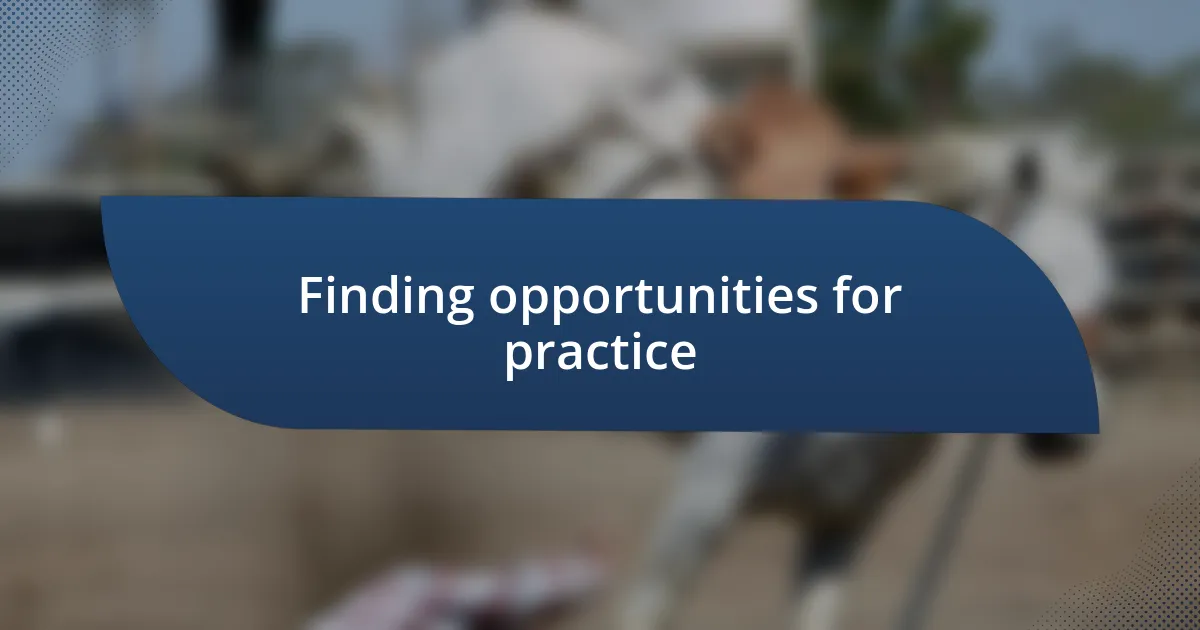
Finding opportunities for practice
Finding opportunities for practice is crucial in honing public speaking skills. Early in my journey, I discovered that real-world experiences are invaluable. I volunteered to speak at community events, because it provided a low-pressure environment to test my abilities. Each opportunity felt like a mini-lab where I could experiment with different techniques and receive immediate feedback.
Here are some practical ways to find those opportunities:
- Toastmasters Clubs: Joining a local club can boost your confidence while providing structured speaking opportunities.
- Local Meetups: Look for groups that focus on public speaking or storytelling. You might find a welcoming audience eager to listen.
- Community Centers: Many organizations welcome volunteers for events and presentations. It’s a great way to gain experience.
- Work Meetings: Take the initiative to share your ideas during team meetings. It’s a chance to practice in front of supportive colleagues.
- Online Platforms: Websites like Meetup or Eventbrite often list speaking gigs or workshops that you might find interesting.
Finding these practice spots was like piecing together a puzzle. Each experience filled in a gap and shaped my confidence as a speaker. I clearly remember the adrenaline rush before stepping up at a local charity event. The audience was small but eager, and each story I shared felt like stepping into my element. It was in those moments of vulnerability that I truly found my voice.
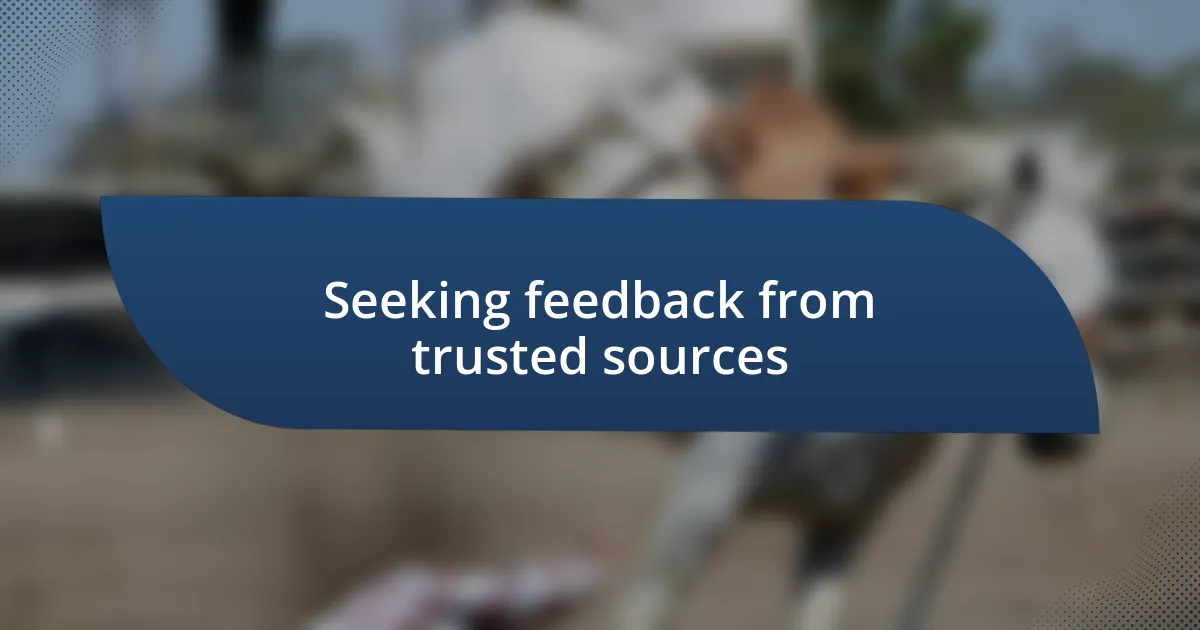
Seeking feedback from trusted sources
Seeking feedback from trusted sources has been a game-changer in my public speaking journey. Initially, I hesitated to ask others for their opinions, fearing criticism. However, I slowly learned that constructive feedback from friends or mentors could illuminate blind spots in my delivery that I simply couldn’t see on my own.
One memorable instance was during a workshop where I presented my ideas. Afterward, I approached a colleague I admired for her communication skills. Her insights were eye-opening; she pointed out not just what went well, but also subtle nuances I could improve, like pacing and eye contact. This kind of dedicated feedback made me realize that growth often comes from looking at things from a different perspective.
I now actively seek out diverse perspectives after I speak. I remember a time I presented to my Toastmasters group. Their feedback felt like a supportive nudge rather than a critique. It reinforced my belief that seeking input can create a safe space for both improvement and encouragement. Isn’t it fascinating how the right words from trusted sources can transform your confidence?
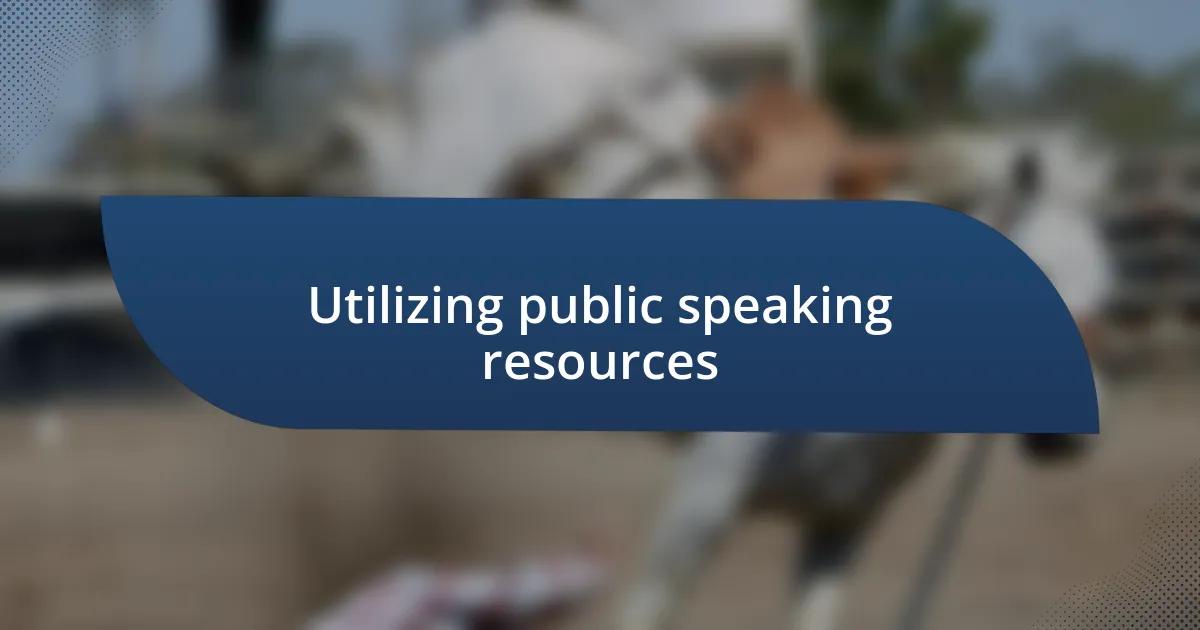
Utilizing public speaking resources
Utilizing public speaking resources has been a pivotal part of my development. I remember diving into countless online courses and watching TED Talks with rapt attention, not just to absorb content, but to study delivery styles. Isn’t it amazing how a well-placed pause or a simple gesture can transform a mundane presentation into something memorable?
I also discovered books that focus on specific aspects of public speaking, like storytelling techniques and body language. One book that truly resonated with me was by a renowned speaking coach. Her exercises forced me to step out of my comfort zone, compelling me to practice in front of a mirror. The experience was both awkward and enlightening—it taught me how my body language complemented my words in ways I hadn’t considered before.
Joining speaking clubs like Toastmasters was another resource that provided an invaluable, hands-on experience. I vividly recall my first speech—my heart raced, and my palms were sweaty. But the supportive environment allowed me to explore my voice and style. Would I have been able to embrace the stage without that experience? Probably not. Each session was a stepping stone. It was this combination of structured practice and community support that really honed my skills.
